An Unexpected Turn
Ghare Baire: The World, the Home, and Beyond, the museum-exhibition by DAG of three centuries of art from Bengal housed at the Currency Building in Kolkata, was a few days shy of its two-month anniversary when the rapidly devolving COVID-19 situation in India forced us to temporarily close it to the public. The online presence of DAG Museums was just a week old, with less than a hundred followers on Instagram and Facebook, but we had an idea of what we wanted the city’s newest cultural space to stand for. We wanted Ghare Baire to facilitate creative exchanges, foster critical thinking, and offer a space for community building around art.
The challenge at hand was to figure out how we could translate these ideas into actionable online programmes. We began to realize that the prospect of building a long-term online museum experience, actually opened up new possibilities that we had not anticipated. Inter-institutional partnerships could be forged virtually, new audiences could be reached by re-defining our notion of accessibility and participation, and the collection itself lent itself to re-narrativizing and re-mixing that would have been challenging in the physical space.
Re-mixing the Collection
The online museum doesn’t have walls. This means that you cannot immerse yourself in the beautifully designed displays at Ghare Baire or be drawn into a painting till our security personnel politely remind you not to try and enter them. But it also suggests the possibility of re-organizing and re-mixing them, juxtaposing them in different sequences, to bring out thematic or historical narratives that were not overtly part of the museum’s discourse. Our DAG Museum Stories campaign on Instagram was an exciting starting point, where we were lucky to have art practitioners and scholars on board to read stories that resonated with their works.
Before long, the experiments with telling new stories in interactive formats led us to Kunstmatrix, a platform dedicated to such experiments. Growing up on a healthy diet of first-person video games, we were drawn to it instinctively, and the virtual viewing rooms paved the way for two valuable collaborations with Victoria Memorial Hall (VMH) and Heritage Walk Calcutta. With the latter, we hosted a series of virtual walkthroughs of different selections of the museum collection, and our collaboration with VMH has already resulted in two virtual exhibitions. But more on that soon.
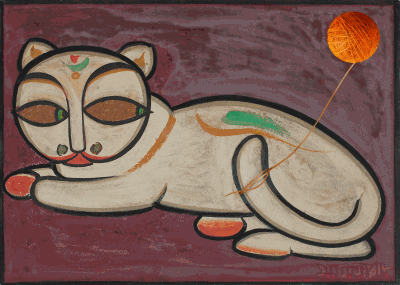
Statue Play by Nikhilesh Prajapati, Winner of the Best GIF award
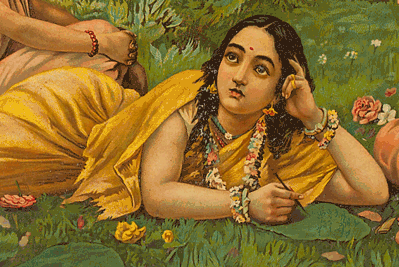
Shakuntala Patralekha Thinking by Soumya Uttam, Winner of the Popular Choice award
Collaborations
That brings us to the second point – productive and relatively easy collaborations. DAG and VMH had discussed the possibility of an exhibition on Chittaprosad (1915-1978) even before the pandemic, but as the immediate possibility of returning to physical spaces started to look bleak, we asked ourselves if we could re-imagine collaborative virtual exhibitions. The partnership has yielded two exhibitions so far – one on three siblings of the Tagore family, Abanindranath (1871-1951), Gaganendranath (1867-1938), and Sunayani Devi (1875-1962), and the current one on Chittaprosad’s art of the personal and the political. Artworks and collections that resided in separate collections revealed new stories and secrets when they were brought in conversation with each other, a new possibility facilitated by the virtual medium.
As we mounted their images on the virtual walls of the viewing room, we knew that while the experience of negotiating a 3D space was fascinating, the sensory experience of viewing the artworks online falls short of the physical engagement. So let’s not fight a battle that you can’t win, we thought. Instead, give it a new direction that is relatively more difficult to achieve offline. And so we started programming around them intensively – discussions with eminent scholars from around the world were supplemented by workshops and performances conducted by ThinkArts for children and young people. It opened up the conversation in ways we had not really imagined.
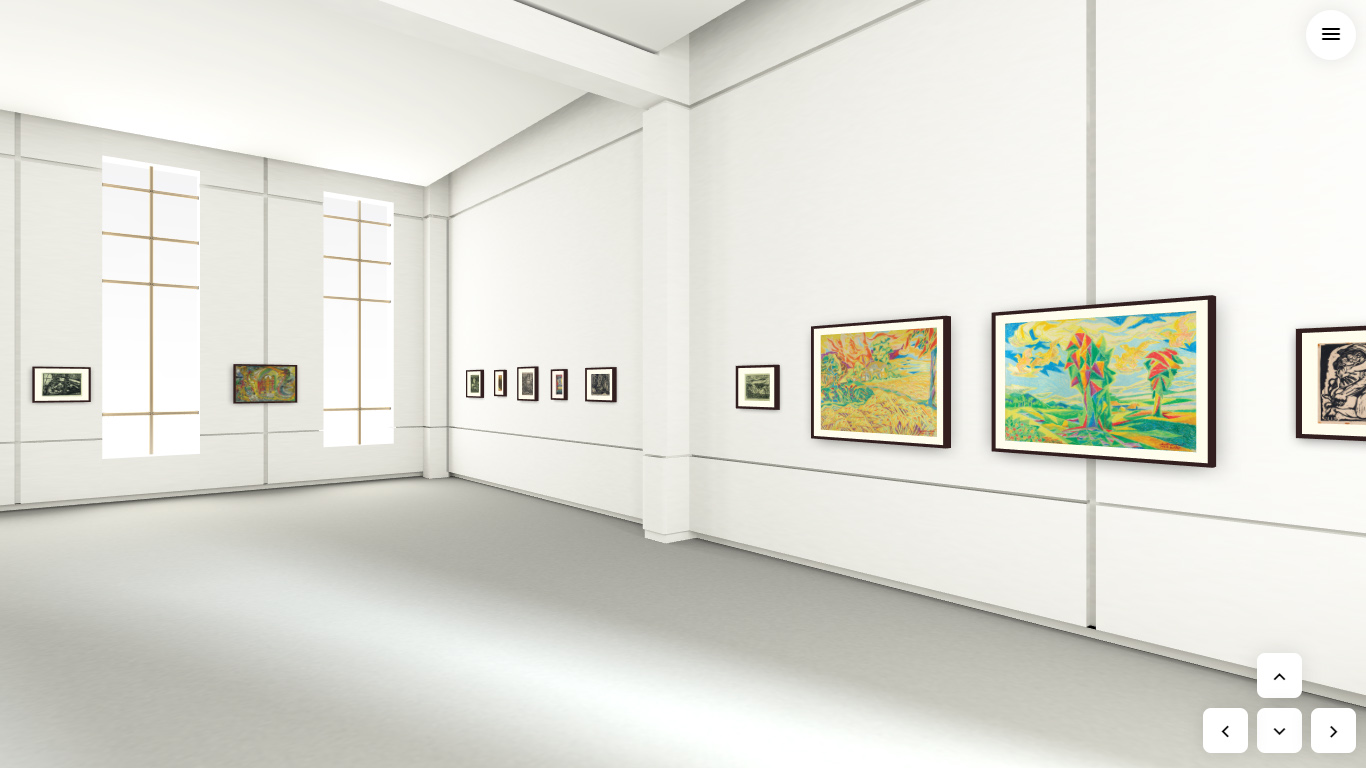
Screenshot of virtual exhibition on Chittaprosad, ‘People’s Artist’
Access and Participation
Museums and cultural spaces have been trying to become more inclusive and as the pandemic opened up questions of unequal access in stark new ways, we had to reflect on the different interpretations of accessibility. For instance, our virtual art education programme, ‘Time Travelling through Art,’ which offers high school, college and university students Zoom sessions on the history of Bengal through art, was modified to an interactive WhatsApp format for mid and low –income schools and NGOs. The response has been positive but in conversation with experienced practitioners in the field, we are in the process of developing this further.
The online discussions and workshops around the exhibitions in collaboration with VMH were translated by a team of sign language interpreters, who did a stellar job of communicating a rather challenging art terminology. In terms of structuring the discussions, we worked with scholars to make their presentations more interactive, inviting questions and participation from the audience. We encourage similar involvement in our DAG Museums ‘Tuesday Tours’ where we talk about an artwork each week but with a view to open it up to interpretations from our viewers.
For the second collaborative exhibition, on Chittaprosad, we tried a participatory curation process. An open call on Instagram for young scholars brought together a team of nine Indian students and researchers based in different parts of the world, with different disciplinary backgrounds, to conceptualize the exhibition and its narrative focus over a series of video conferences.
From the collection’s point of view, accessibility can also mean opening it up for the general public to interpretation, re-mixing and even a more open-ended engagement. We partnered with The Heritage Lab and Europeana for a ‘GIF-it-up’ contest, which made us the first Indian museum to put 13 of our artworks in the Creative Commons, and led to over one hundred responses from people across the country ranging from the absurd to the sublime.
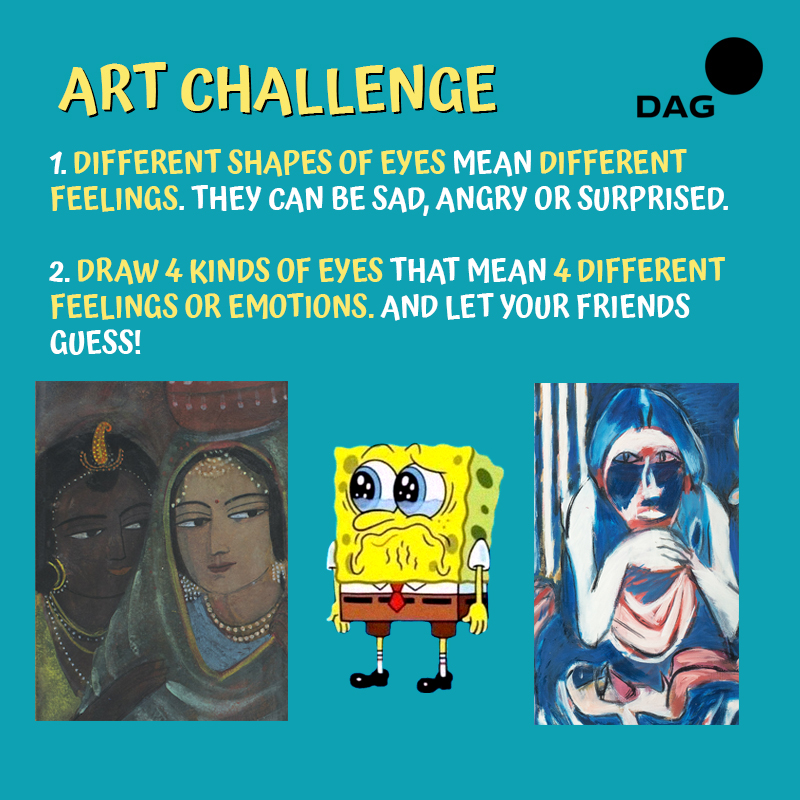
Art Prompt poster for Time Travelling through Art (WhatsApp module), our programme for school children
Returning with a Change
As we slowly and cautiously begin to welcome visitors back to the Currency Building, we look back to see how the learnings of these past seven months can be retained and blended with the physical experience of the museum. The challenge now is to keep both experiences running in tandem.
– DAG Museums Team
About:
DAG has done seminal work in gaining recognition for India’s modern masters whose legacies had been lost to time and apathy in the absence of sufficient viewers, collectors, promoters, curators or scholars.
DAG Museums is an initiative of DAG, that aims to build a shared public legacy of the best of Indian Modern Art. With 3 museums and museum-exhibitions across Delhi, Varanasi and Kolkata, at some of the most iconic heritage monuments, DAG Museums is building cultural spaces for critical engagement, creative expression and inclusive communities.







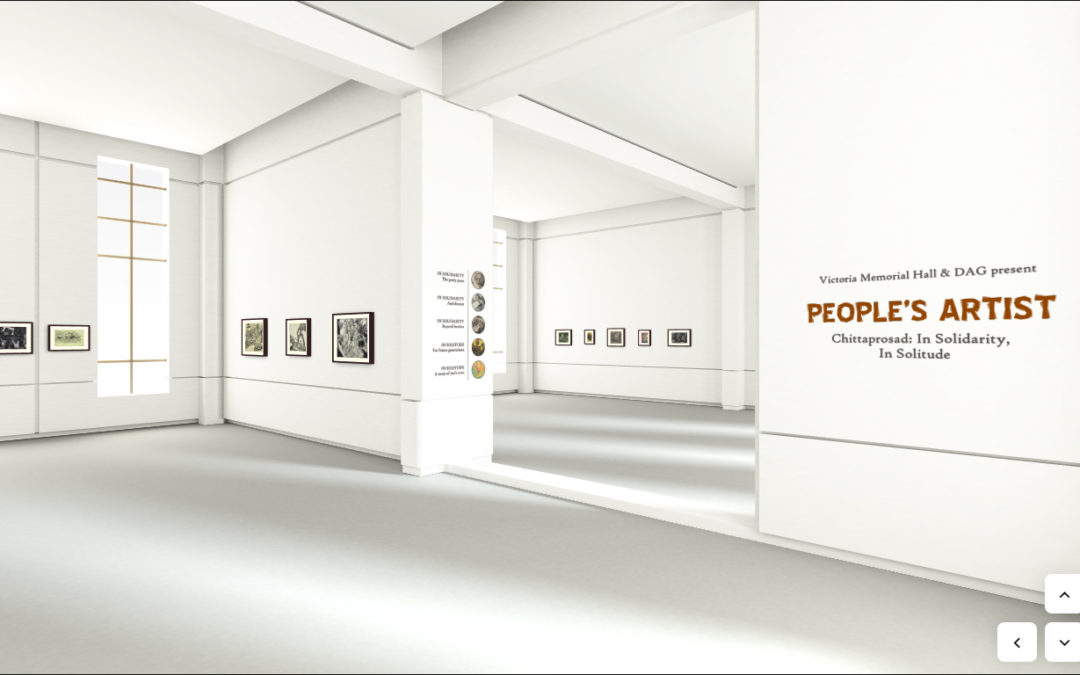
Recent Comments